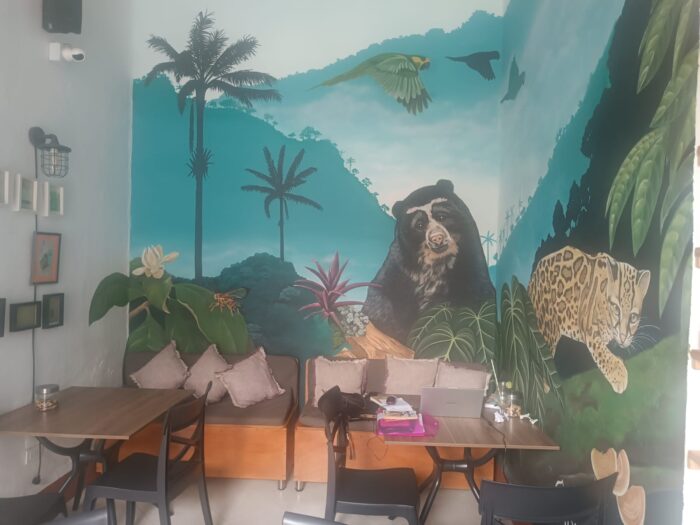During our stay in the bucolic village of Jardín, we had the opportunity to take Spanish lessons with Hablea and to visit a coffee plantation, the Finca Los Angeles.
Going to Finca Los Angeles
The experience started on the Jardín village square taking the local mode of transport – the Motorcycle taxi! Commonly called a “Tuk-tuk” by westerners, this 3-wheel motorcycle drives us at its own speed towards the coffee plantations, and allows us to enjoy the unique opportunity of the exceptional landscapes opening up to us.
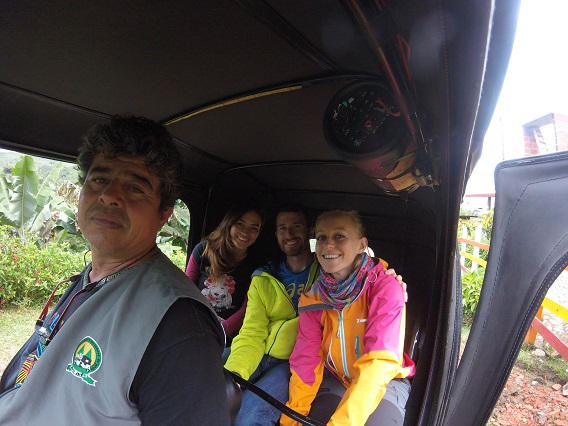
After a 20 minutes’ journey, we arrive at the approach to a modest peasant house situated in the middle of coffee plantations. We have just got out of the motorcycle taxi, when Andrés, the owner of the place, welcomes us with a warm embrace. We do not know each other yet, but we are welcomed as if we were part of the family!
During the visit
We join the small group of 6 tourists already seated on one of the terraces of the house, and the presentation of the finca begins. In a very down-to-earth way, Andrés explains everything about his finca: how it is run, the problems they have, how proud they are, and so on.
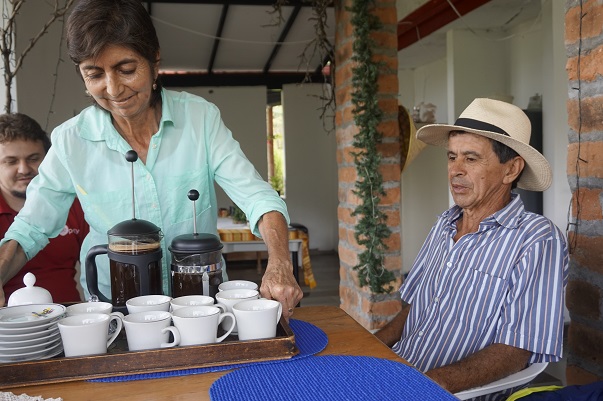
Why Colombia is one of the best coffee producers?
Andrés explains that Colombia is the third largest coffee producer in the world, producing exclusively Arabica, but the first country regarding quality. Brazil is by far the leading producer and surprisingly enough, Vietnam is the second! In Colombia, there are about forty varieties of Arabica coffee grown at a height of between 1200 and 1900m altitude. The harvest periods can be very different from one place to another within the country according to the variations of temperature, the altitude, the richness of the soil and the quality of the water.
Andrés and his wife Ángela own a piece of land where they have 20,000 coffee plants. They cultivate several Arabica coffee types: Castillo, Catimori, Colombia … But for us, it’s impossible to tell the difference! They stress that their production is entirely organic which respects the environment.
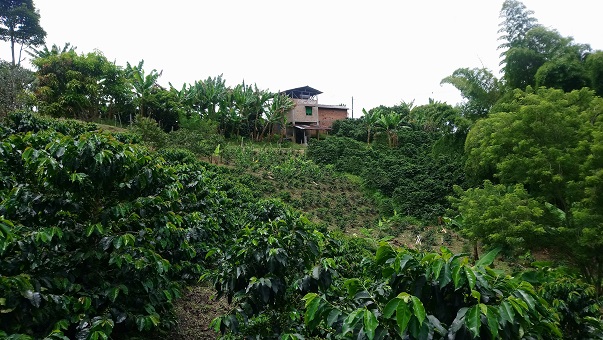
In the vicinity of Jardín, small coffee producers are numerous and this maintains a vibrant economy in the region. Here there are neither “very rich” nor “really poor”, and when there are problems, the peasants help each other by bartering their produce.
Bananas and Coffee plants
It must be said that here the coffee harvesting is done during the last three months of the year, and in order to have enough income during the rest of the year the farmers also grow fruits and vegetables. Andrés and his wife have a lot of banana trees, and this allows them to live comfortably. Bananas have other advantages – they enrich the soil around the coffee plants, and also protect them from the sun in the middle of the summer.
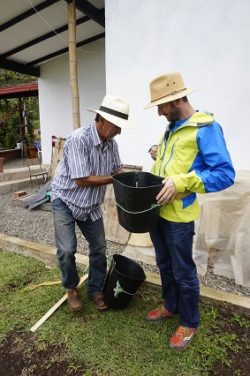
After a cup of coffee we were ready for the job!
After having a good first cup of coffee, Andrés accompanies us to his coffee plants. He provides us with baskets for the harvest, and walking along between the coffee plants he shows us which beans to pick. Here the picking is done exclusively by hand, which is a mark of quality. It goes without saying, machines would have a hard time doing this job because of the topography! Although one to two people are needed during the year to maintain the finca, during the harvest season it takes 5 to 6 people to get all the red beans harvested. At this time of the year, his family works 20 hours a day, 7 days a week. There is no question of picking coffee beans that are not ripe, so they have to go through again every 20 days to check on each coffee plant and to pick the newly ripened red beans.
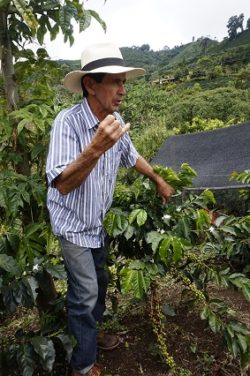
The visit to the plantation continues. We have the good luck of visiting the site at a time close to the harvest season, and many of the beans are already ripe to pick. We therefore join in the game of collecting the beans in the baskets we were given, an activity enjoyed right down to the youngest!
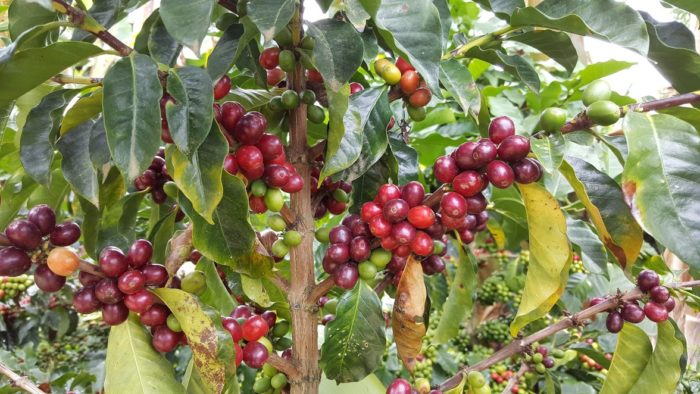
Andrés finally lets us visit his “machine room”, where the beans are processed. He explains the method of coffee production, from harvest to cup! (Only the roasting stage cannot be done here because the machines are very expensive and the process is carried out in a local co-operative called “Café de los Andes”.) The producer is totally passionate about his work, and it is hard not to fall in love with this place and with this family, so full of human warmth.
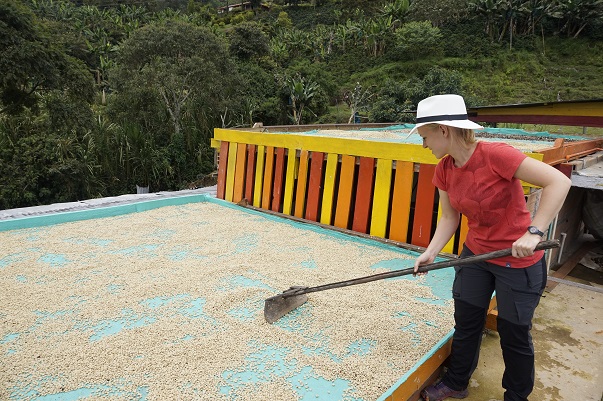
At the end of the visit, and after another coffee, we are invited to buy some of their produce – beans or ground, strong or medium. We are glad of the opportunity to buy coffee that has not been mixed with that of other producers (like in a co-operative), and especially the fact that there is no middleman, so that all the income is for the family of Andrés and Ángela! This will all contribute to future investments in their finca, such as a machine to roast their own coffee for example.
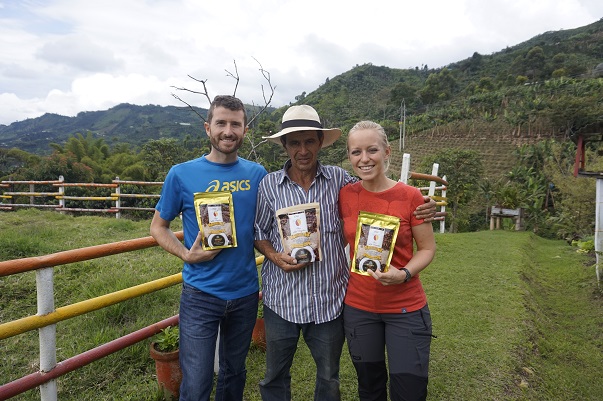
This couple has allowed visits to their finca for the last 6 years. They began nervously, with two visits a month, but little by little, and thanks to tourism, the activity grew and the family was able to provide an education for their children. They don’t want to allow groups which are too big, and they prefer visits with a limited number of tourists, so as to present their finca in a personal way.
Having already visited a famous coffee finca in Costa Rica, we can tell you that we notice the difference! Here we take our time, they answer all our questions, we taste their different types of coffee, we walk in their plantations, and most of all we immediately feel “part of the family”!
After the visit, we take the option of returning to Jardín on foot. It is about a one and a half hour walk, mostly downhill, which gives us magnificent views of the plantations of other local producers and the surrounding mountains… Of course, we could also have asked the motorcycle taxi to stop for us to take photos, but this experience is different! Only the last part on the main road is a little less pleasant, but you can still stop a motorcycle taxi that passes by if you want to be taken back to the village more quickly.
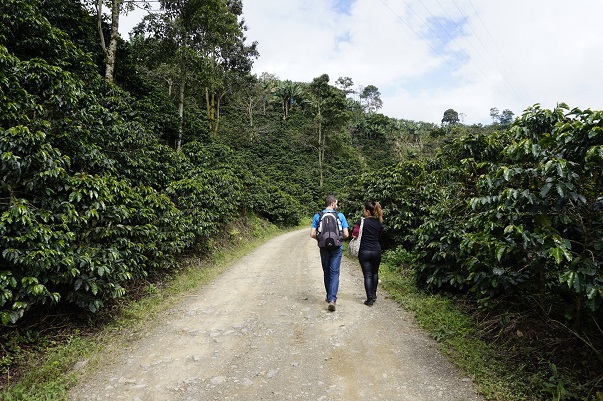
This visit delighted us, and we hope we have convinced you to make a trip there as well!
If you want to visit the Finca los Angeles with Hablea do not hesitate to contact us:
info@hablea.com. A guided tour in English is possible.
David Bernand et Elsa Holmér

